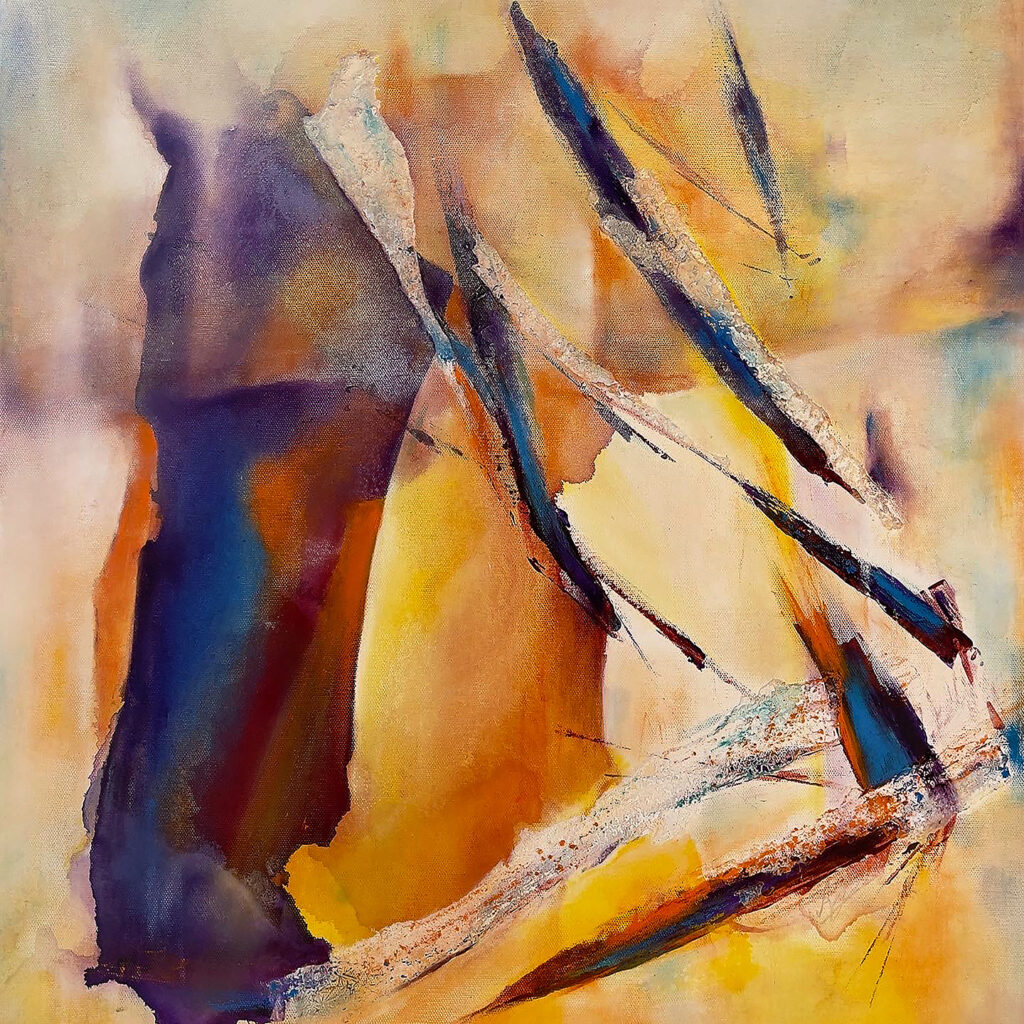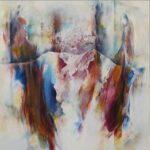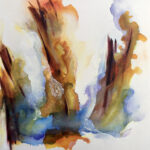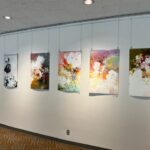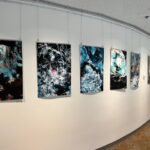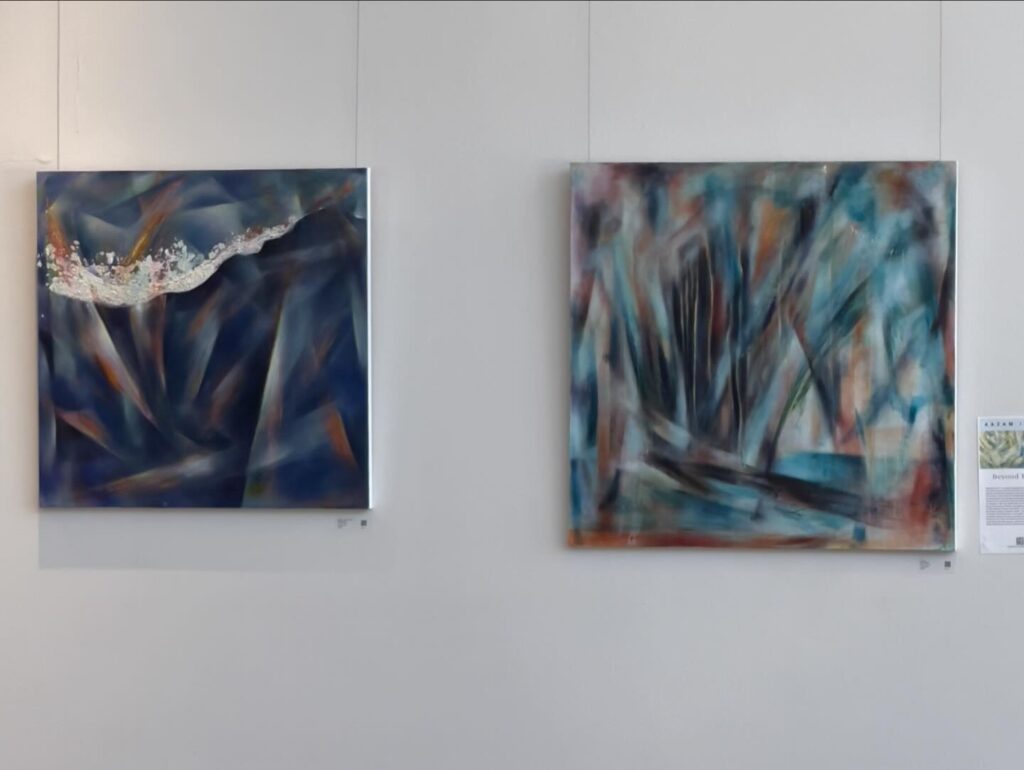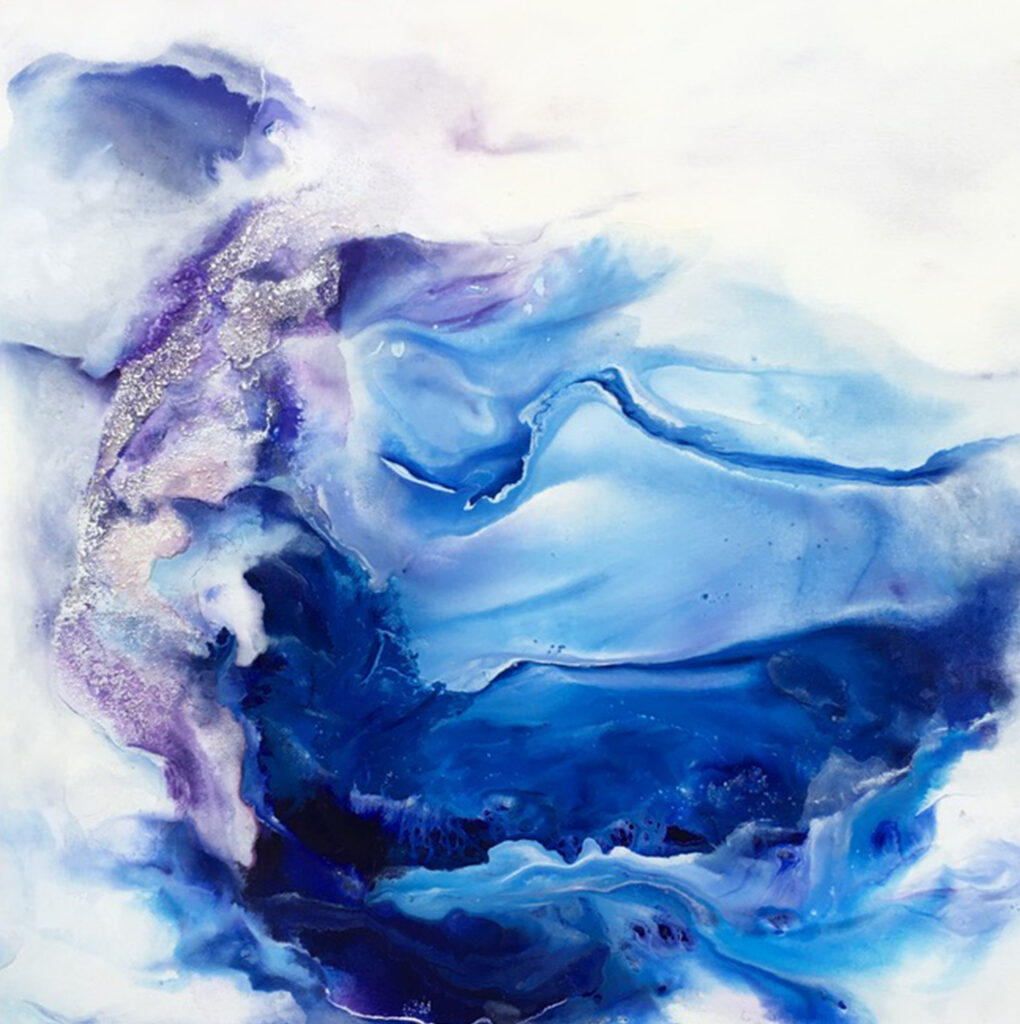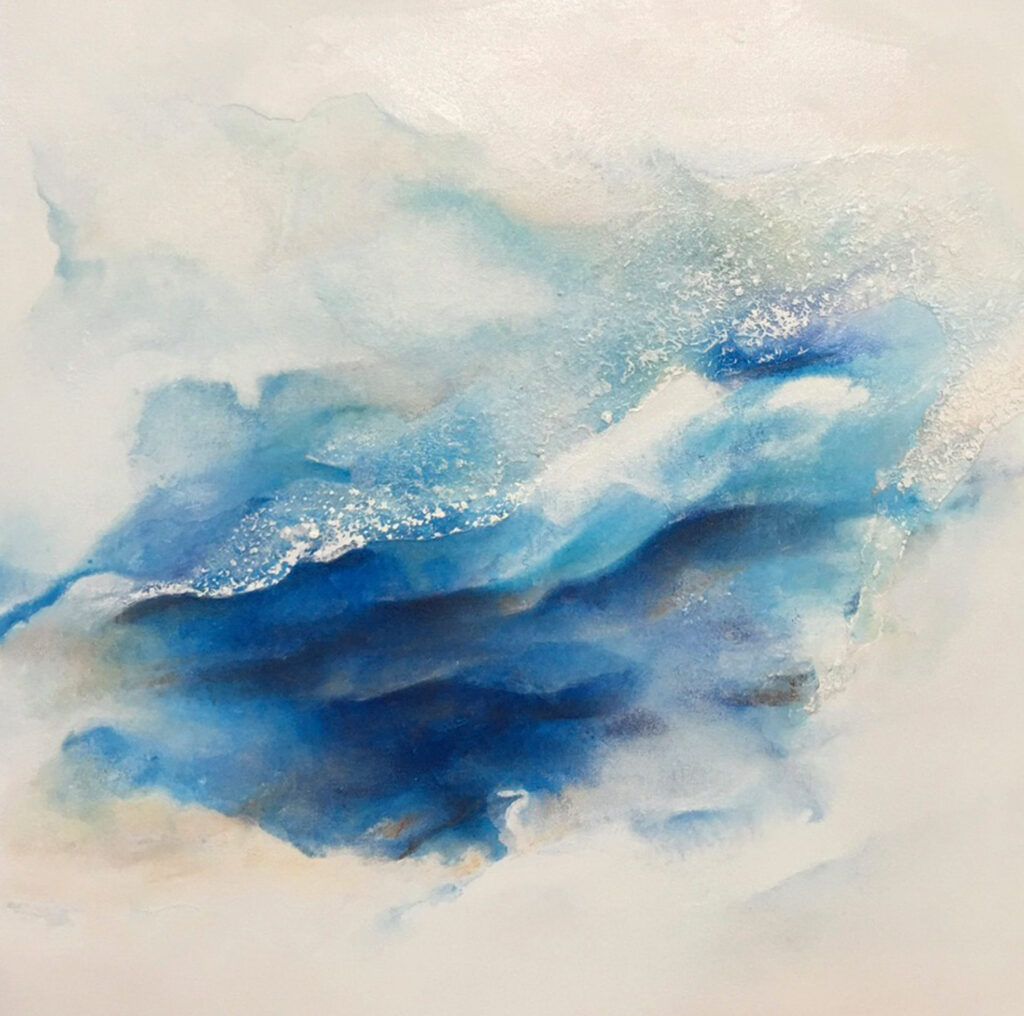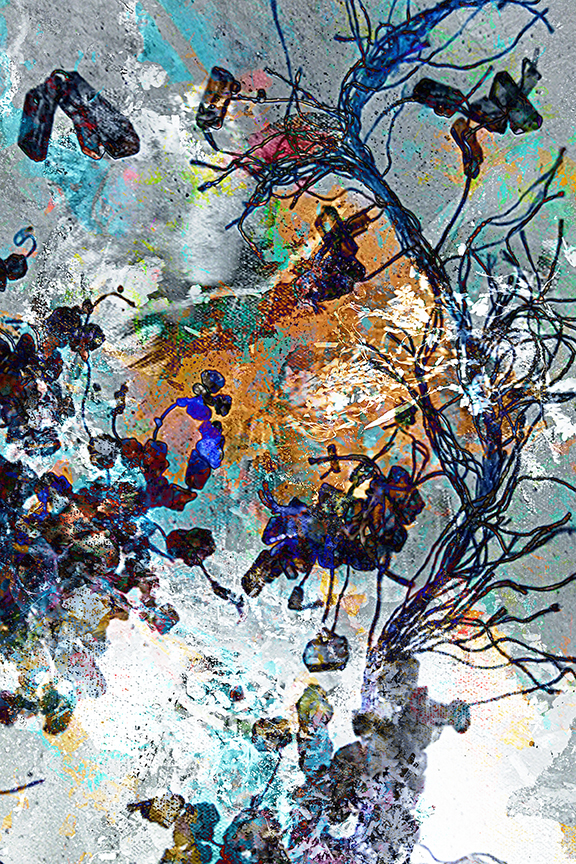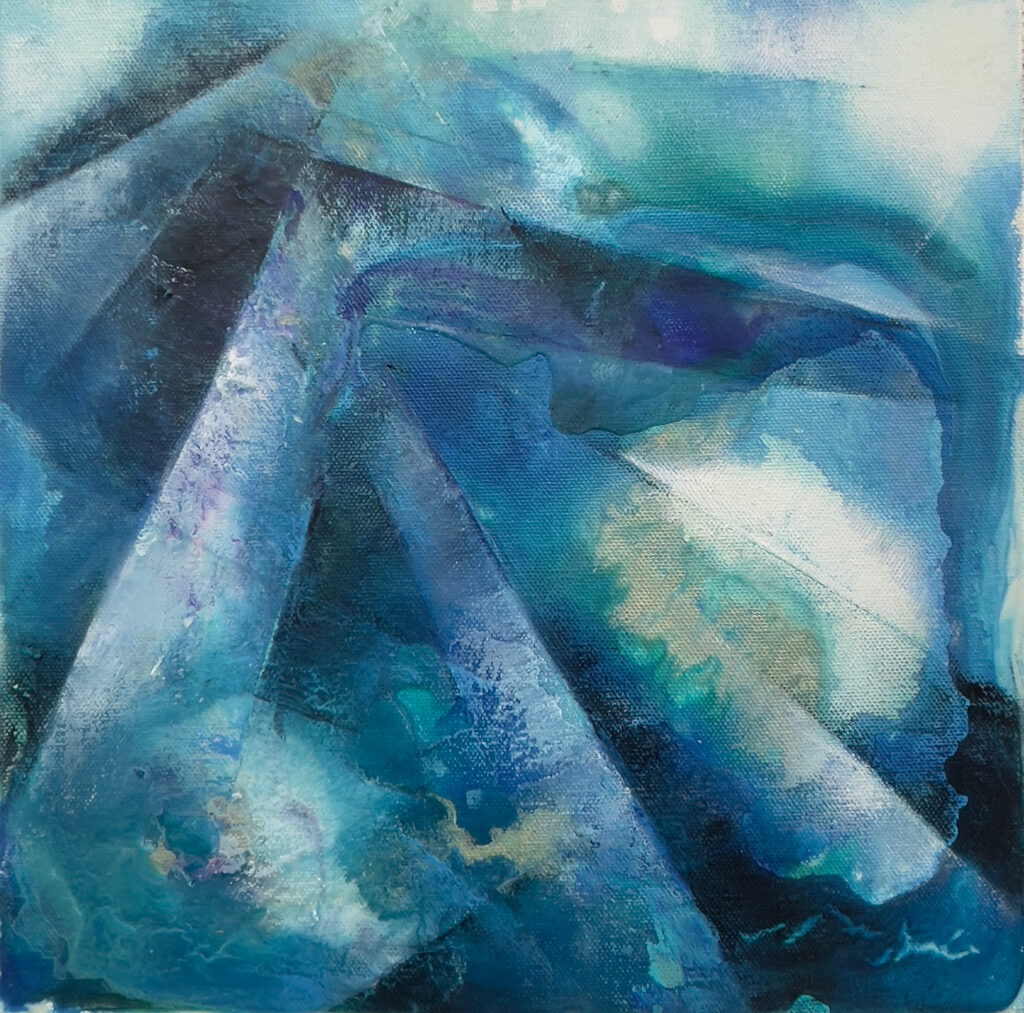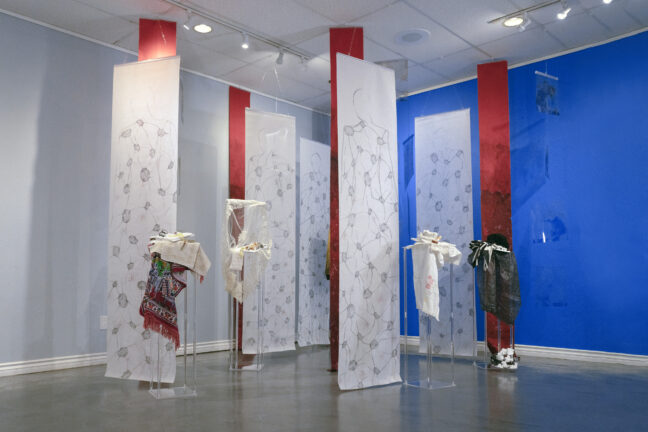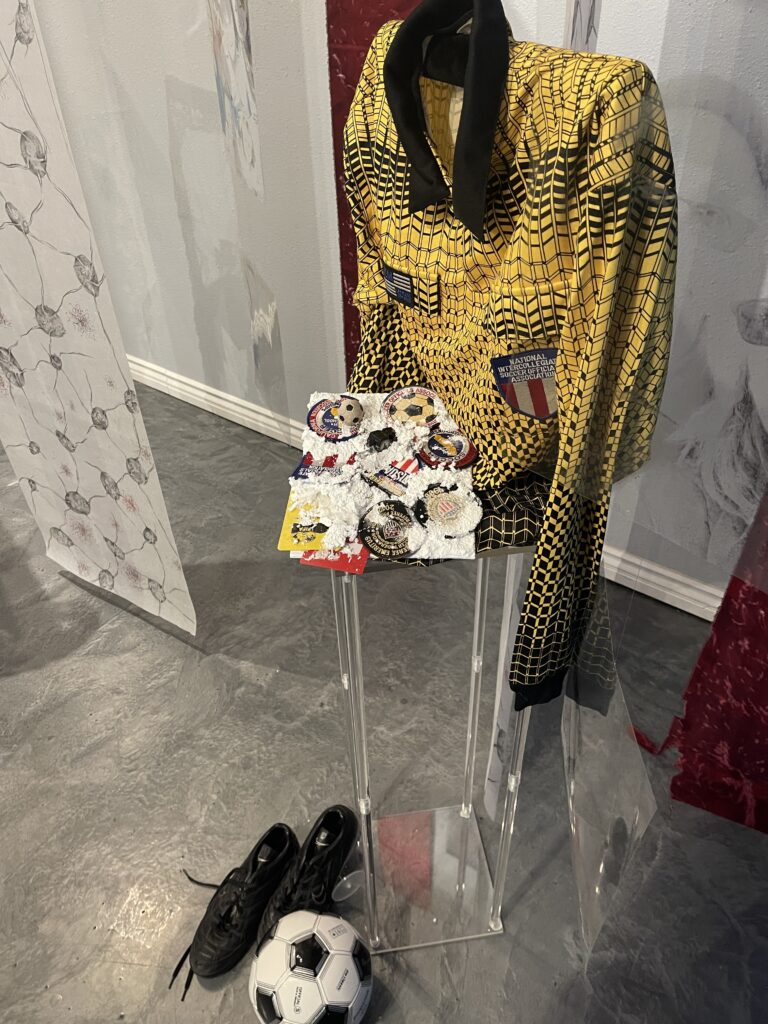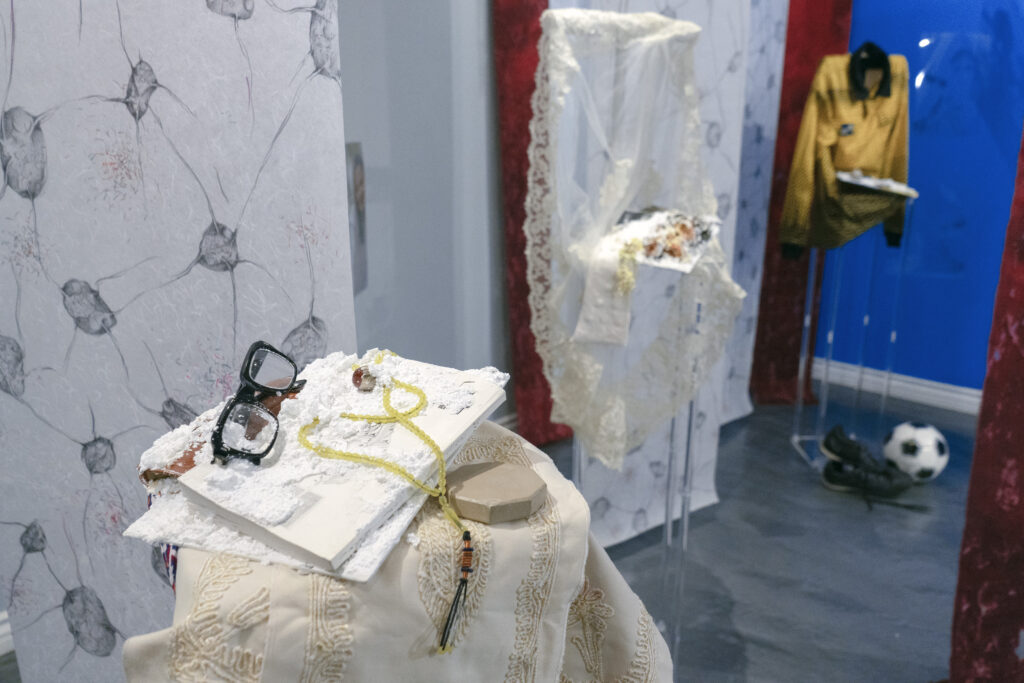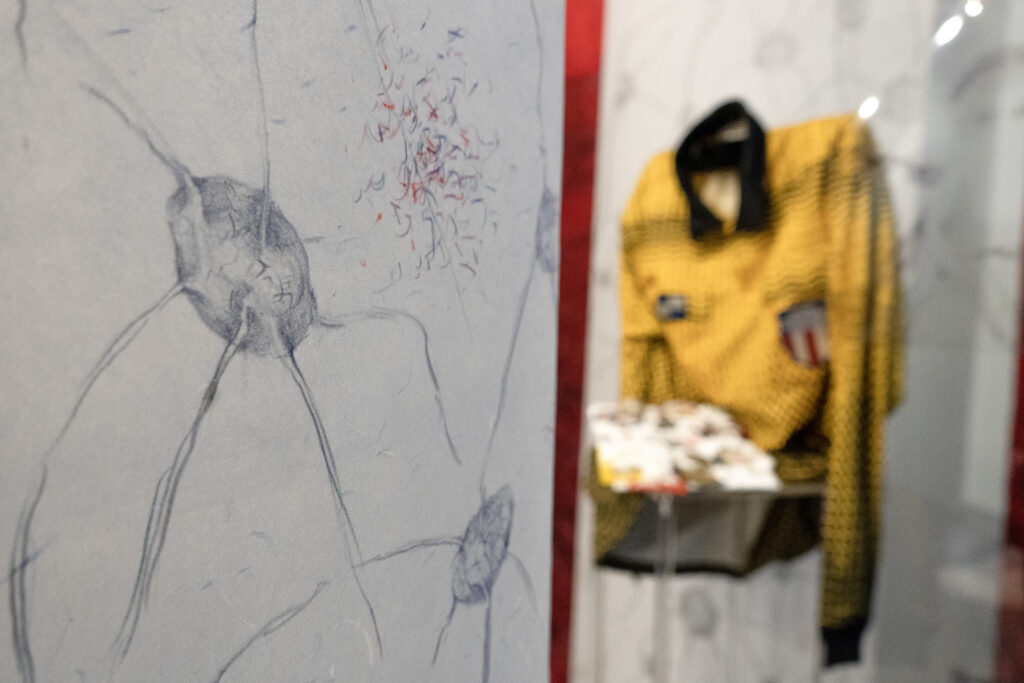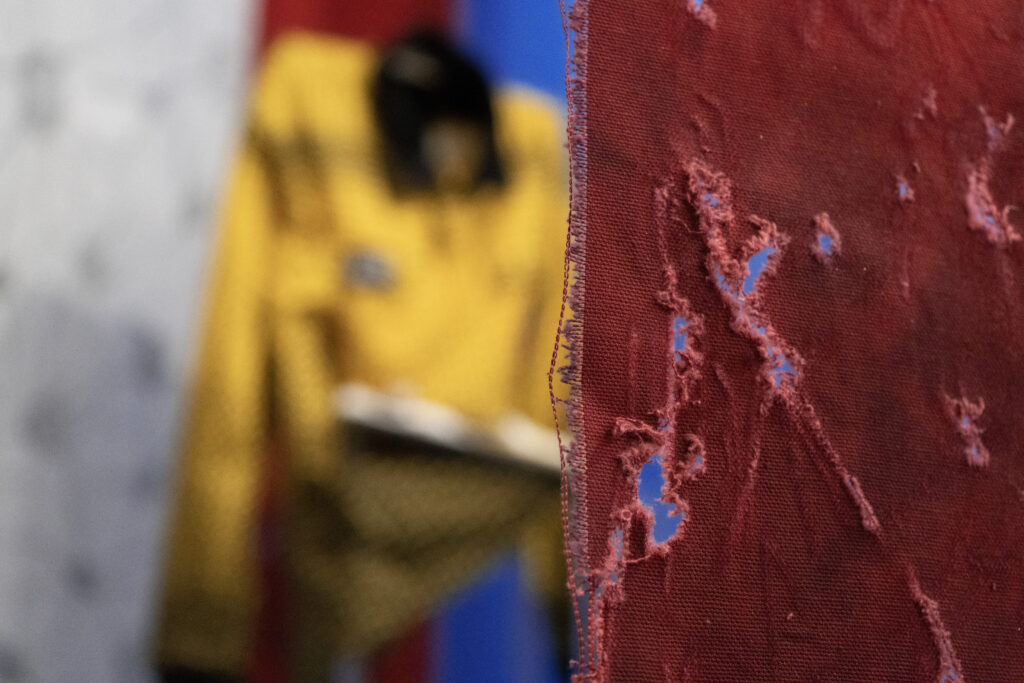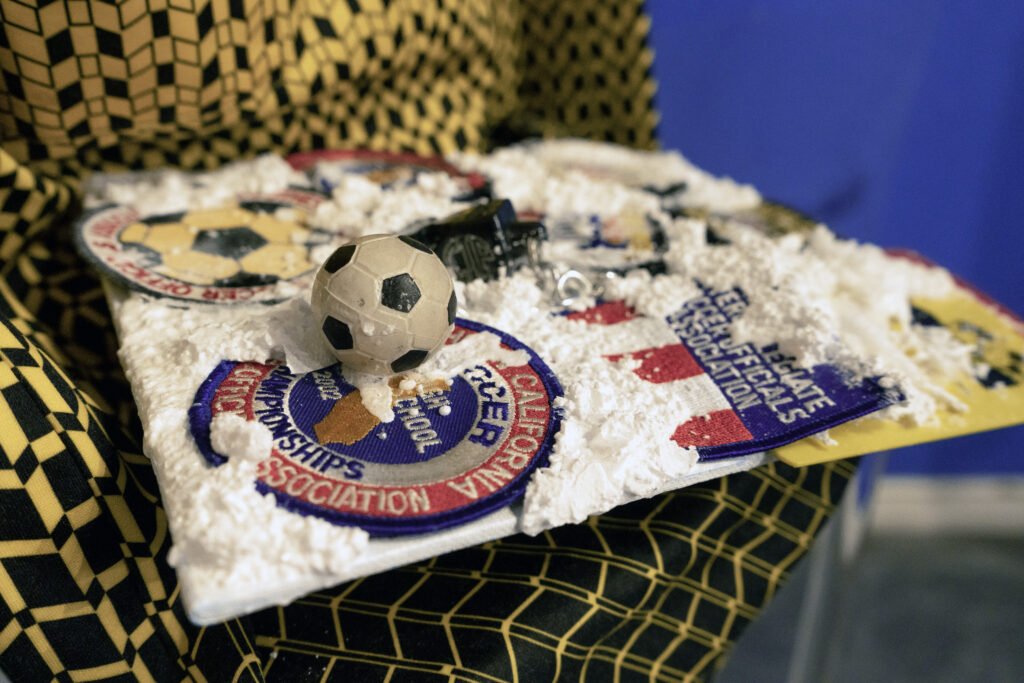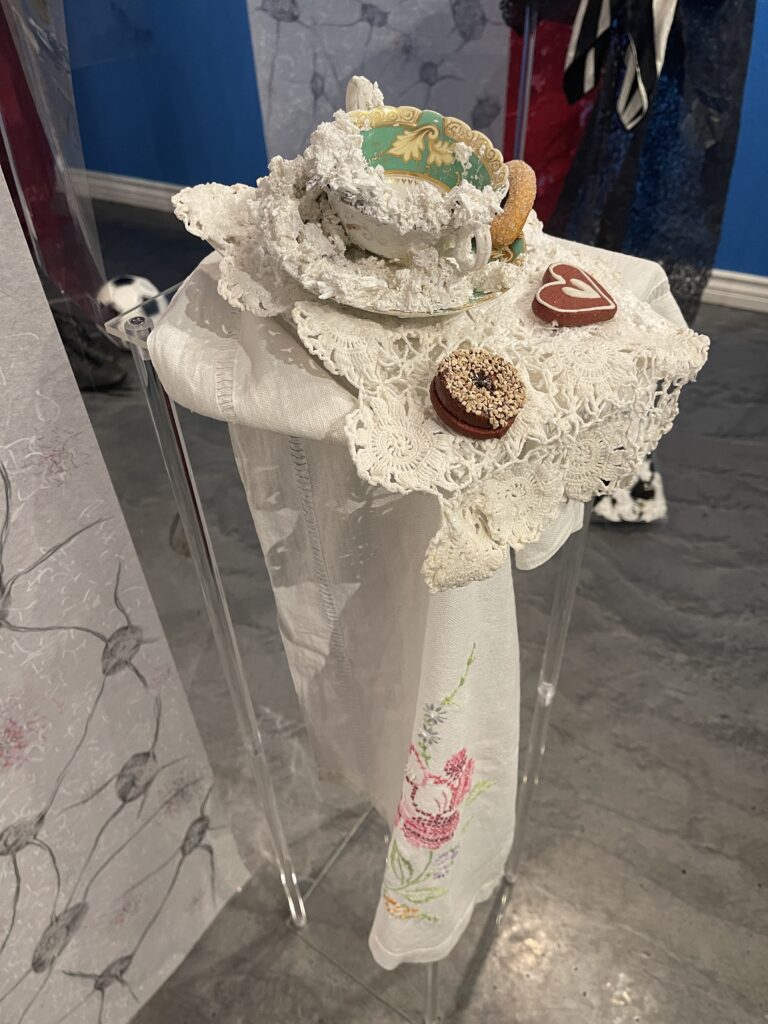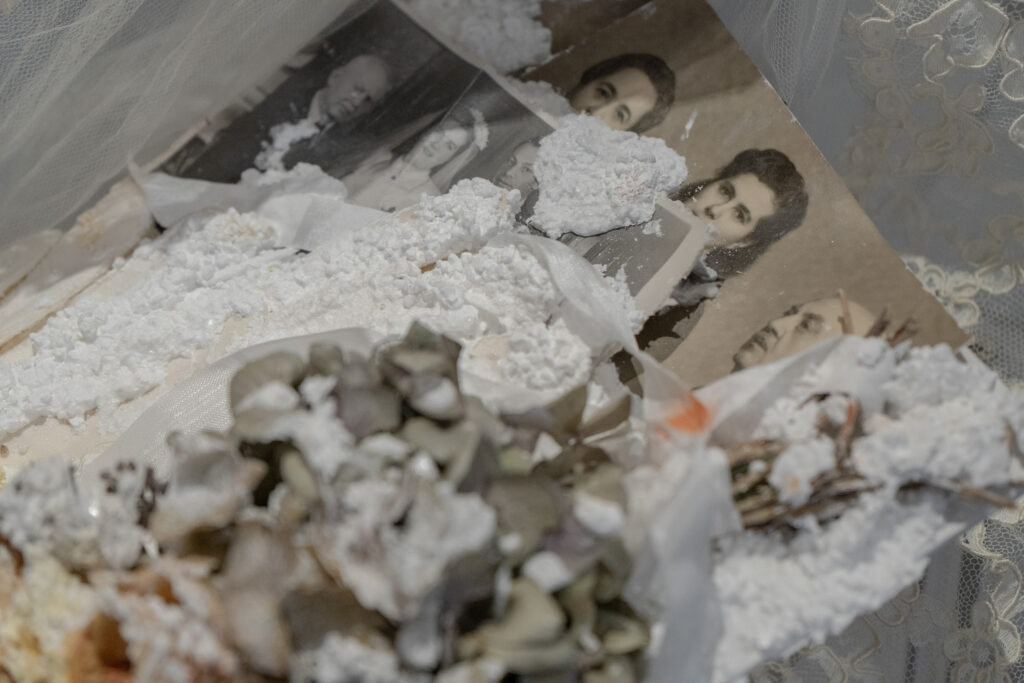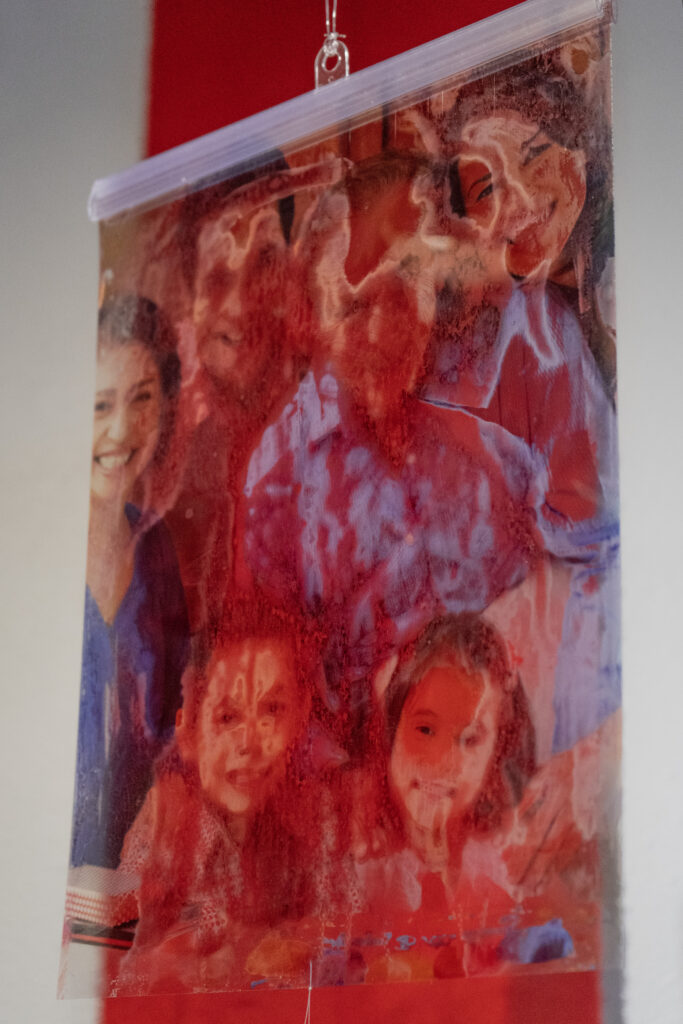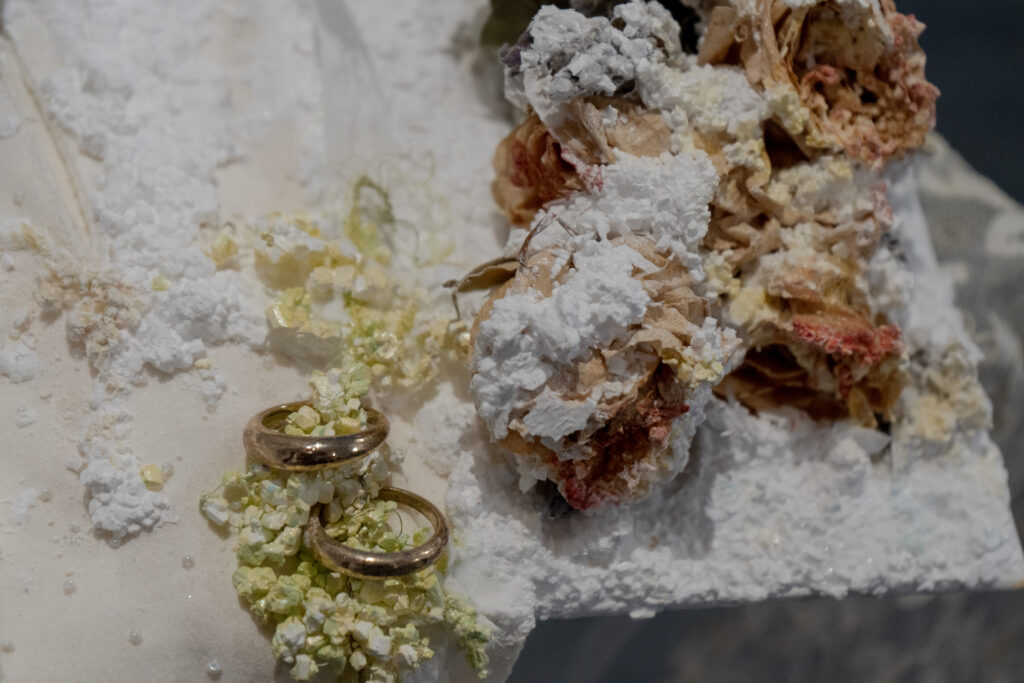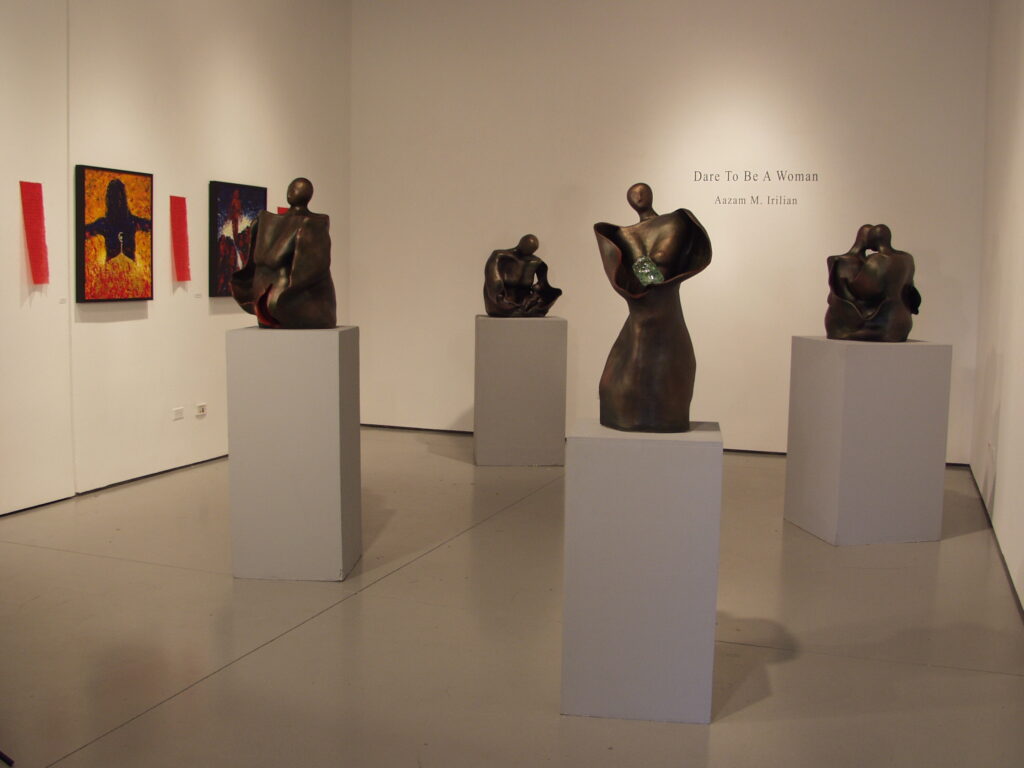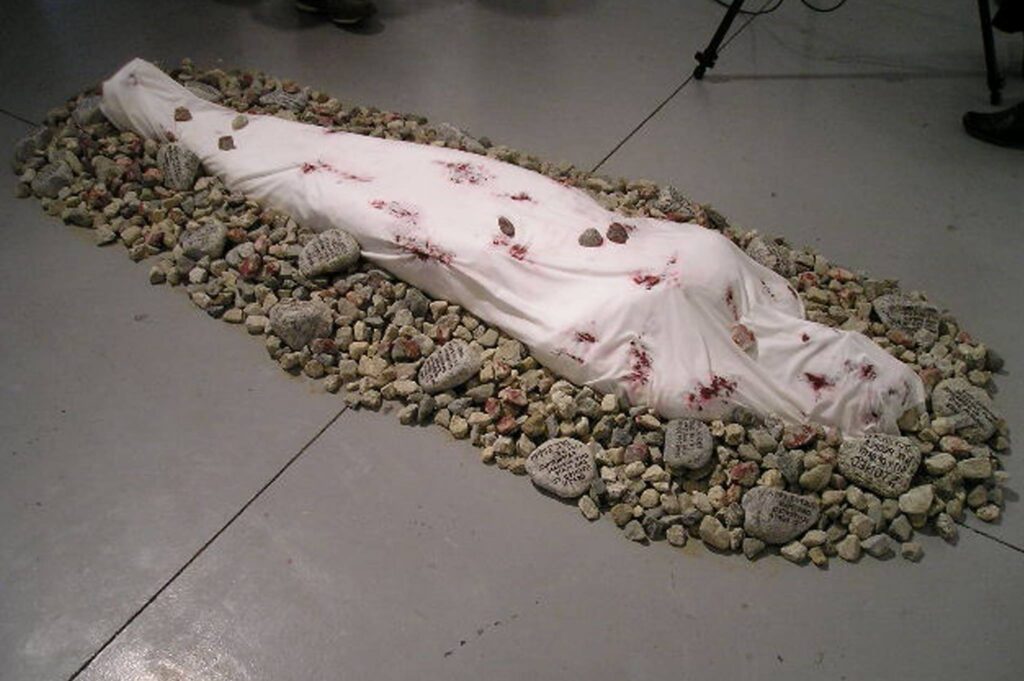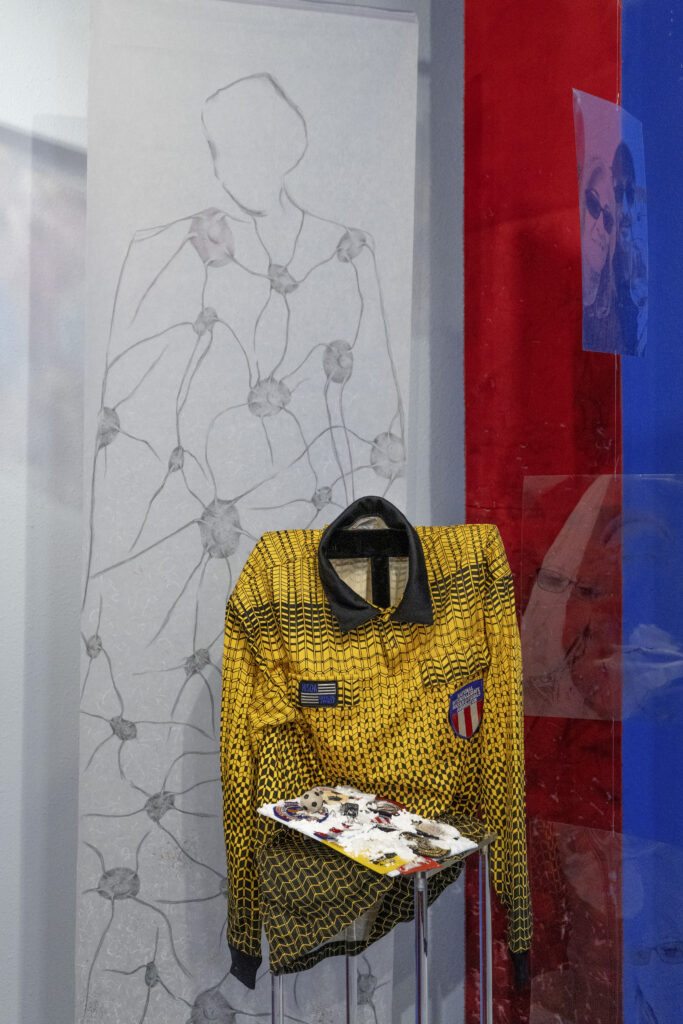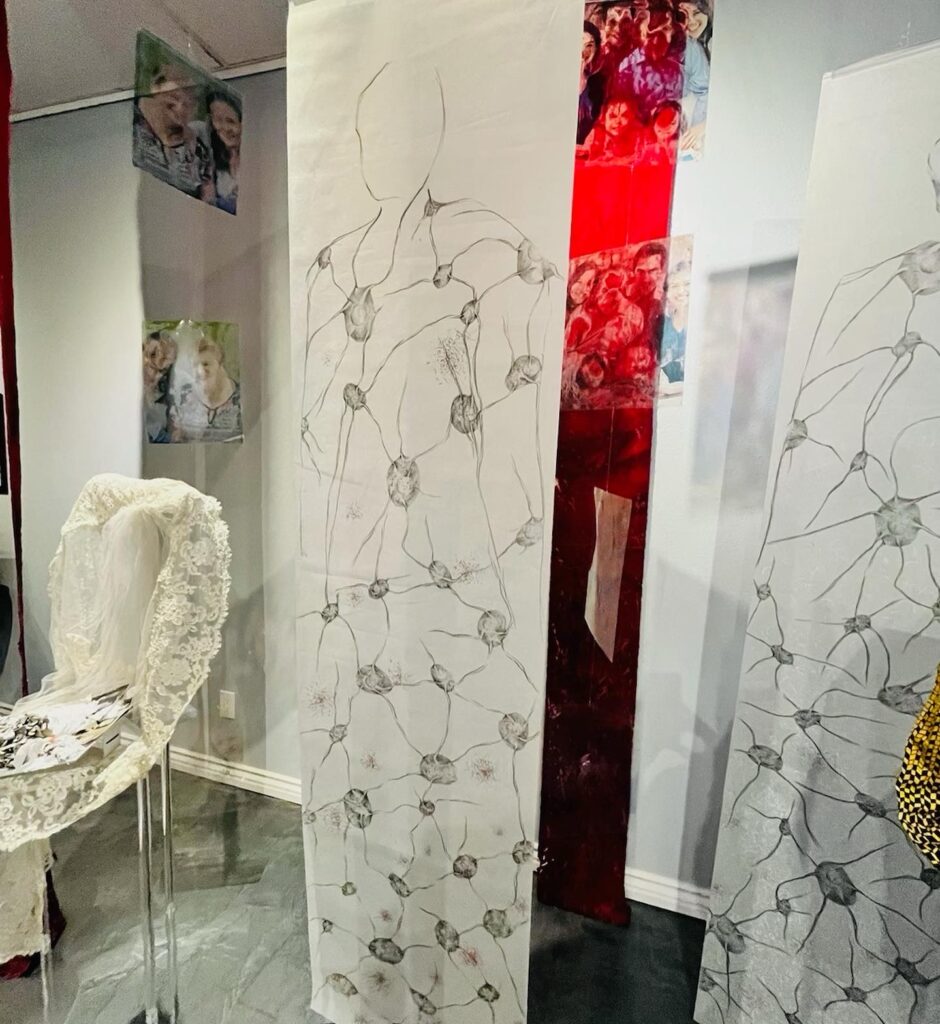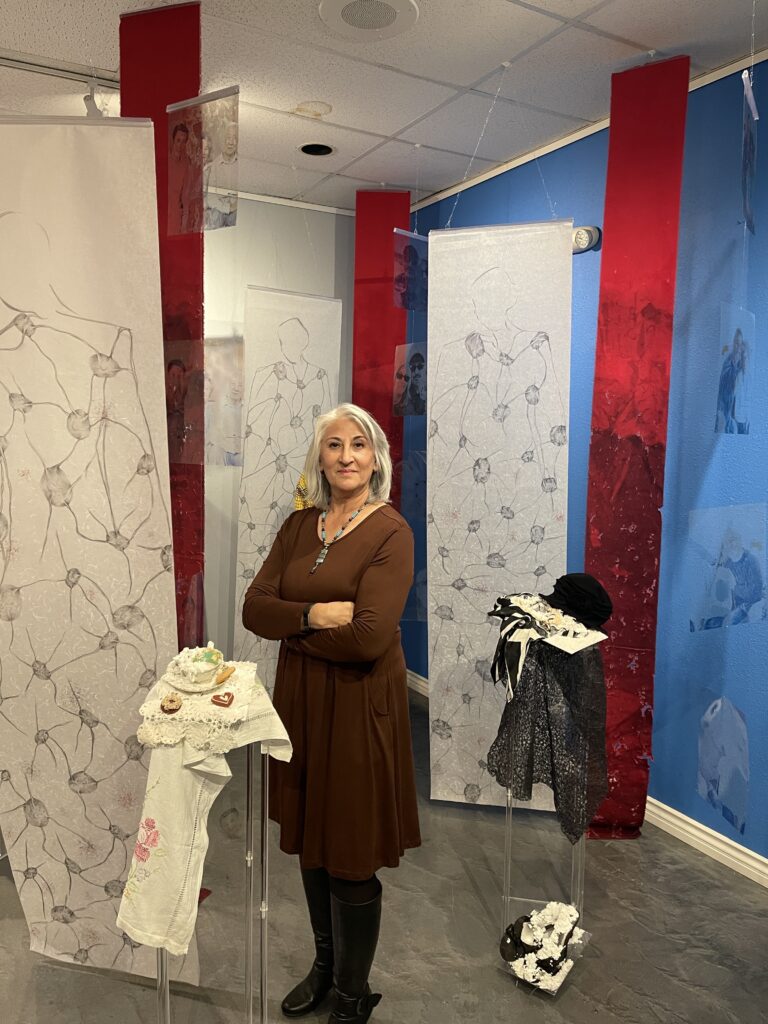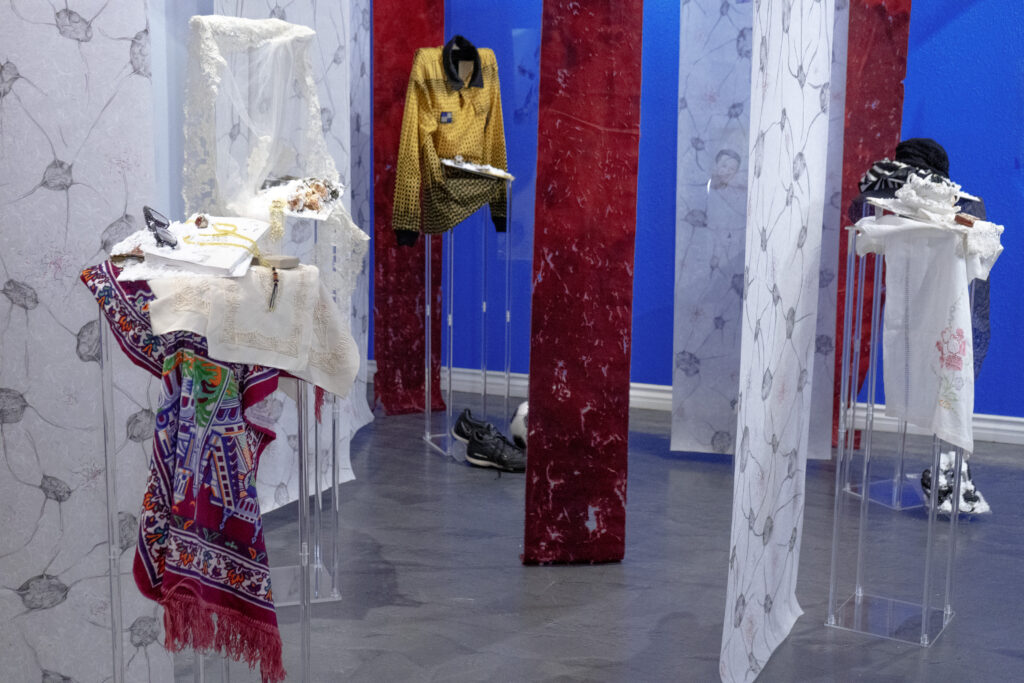At the Poway Center for Performing Arts through March 24th, artist Aazam Irilian offers a series of dynamic, vibrant worka that exudes, at the same time, a sense of Zen-like stillness and serenity. Stillness in Chaos features immersive mixed media works that are contemplative in nature and focused on the delicate beauty, precious resilience, and lush colors of the earth. The images offer succor and solace, but also serve as a fierce call to protect our planet.
Irilian says her inspiration for the exhibition began during her pandemic lockdown period. “It was during the time that the whole world was in turmoil. In addition to the outside world, my personal life was also changing rapidly.” After 43 years of marriage, Irilian’s husband was diagnosed with dementia which progressed rapidly. “Between the outside world and what was happening at home, everything seemed to be in chaos anywhere I looked,” she relates.
Calling her painted works here “layered in meaning,” she explains that a rush of thoughts led from one to the next even within the act of creating. “ Each step, action, and stroke would take a different meaning,” she attests.
According to Irilian, in her Indigo Dreaming series, her use of the color blue served as a metaphor for the uniqueness of race, culture, and gender, by introducing only one color additional to blue in each painting. This allowed a fluid and organic flow that moved each into the other, forming new colors. “The message I was communicating was [that] if we allow natural interactions and interconnections to take place, each individual, regardless of race, gender, or culture shines in its own beauty, and we will have a more cohesive human community.”
Along with this sense of purpose and meaning in her palette, Irilian notes that her process would also return a sense of calm, and to memories of her experiences in nature. It was the calm engendered by her process that shaped the exhibition title.
The artist considers her work to be “multi-perspective…meaning that the viewer needs to bring their own experience into each piece and decide what it is they are looking at.” Each work makes a fresh kind of landscape, in which the viewer alone determines what they are seeing and their point of view, including aspects such as whether they are looking into, down, or up at a given landscape. Viewers are likewise encouraged to determine if a particular image reminds them of a location or experience.
“Take your time,” Irilian says, “really see how a piece makes you feel, what or why you resonate with it—experience being in the moment and letting go of the craziness of your day.” The richness of Irilian’s palette encourages this type of contemplation. Of it, she says “I believe life is beautiful and filled with joy, regardless all its challenges.”
Combining both original paintings and limited-edition digital assemblages that mirror the artist’s painting style, the exhibition’s open and light-filled space at the Performing Arts Center reflects the show’s creative energy and overall sense of poetry. “Regardless of the medium or the type of art, [my] process is visualizing this energy as waves of light and color, dancing and moving through me, flowing through my hands, and landing onto the canvas or the surface I am working on. I create in a state of mind that I want my viewers to feel when looking at my art.”
While the exhibition blissfully utilizes Irilian’s signature fluid, flowing style, some pieces indicate a transition for the artist in the use of sharper, more angular strokes that fill a full canvas.
Overall, the show is lush in its abundance, as flowing as water or wind; it is lustrous work that shimmers with purpose and passion.
Irilian will be present for a Meet the Artist Event on Saturday, March 23, from 2 – 4 pm.
Poway Center for the Performing arts is located at 15498 Espola Rd, Poway, CA 92064
Gallery Hours: Tuesday – Thursday: 10 am to 2 pm, Friday: 1 to 6 pm, Saturday: 1 to 6 pm
- Genie Davis; images provided by the artist



